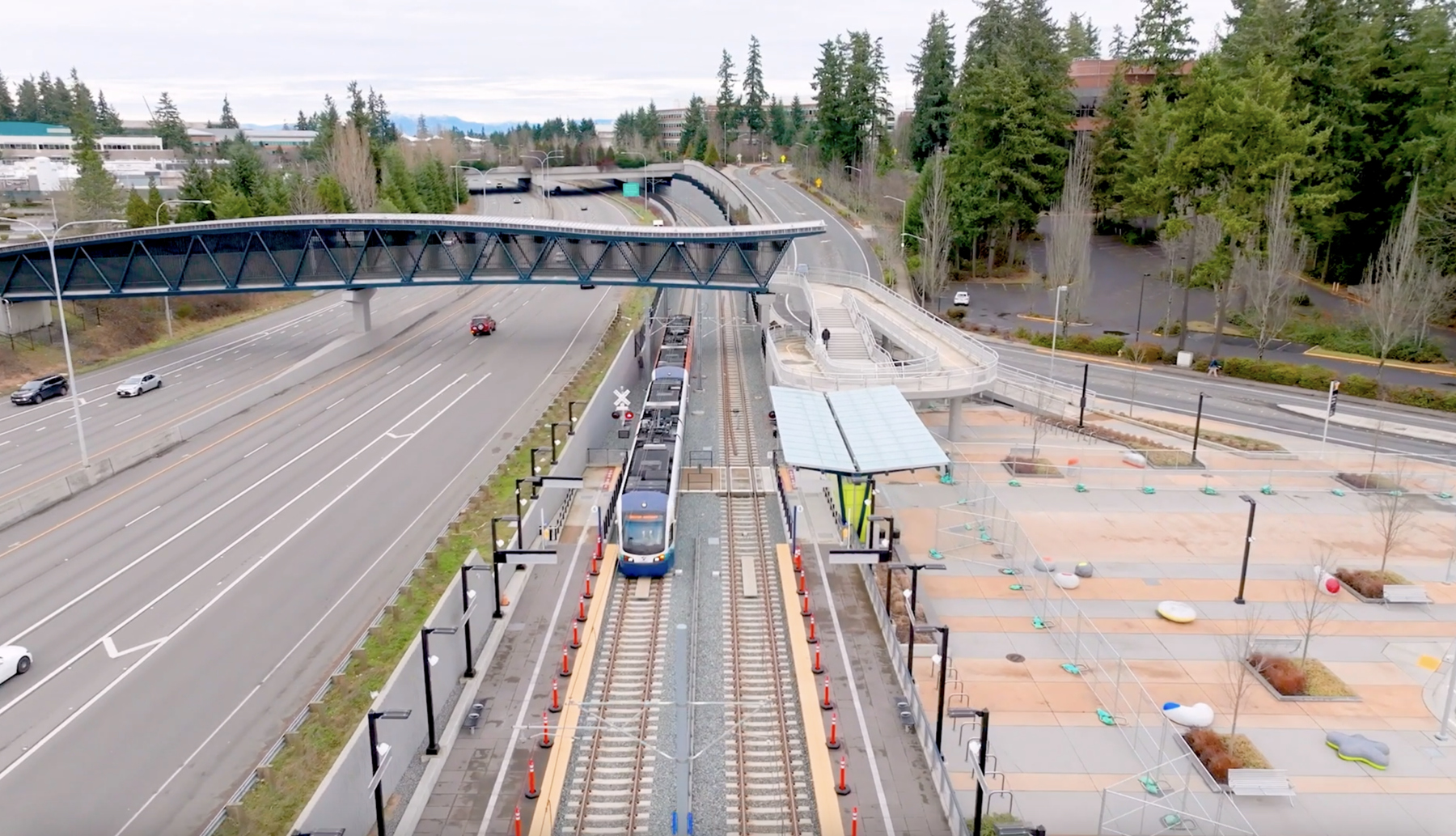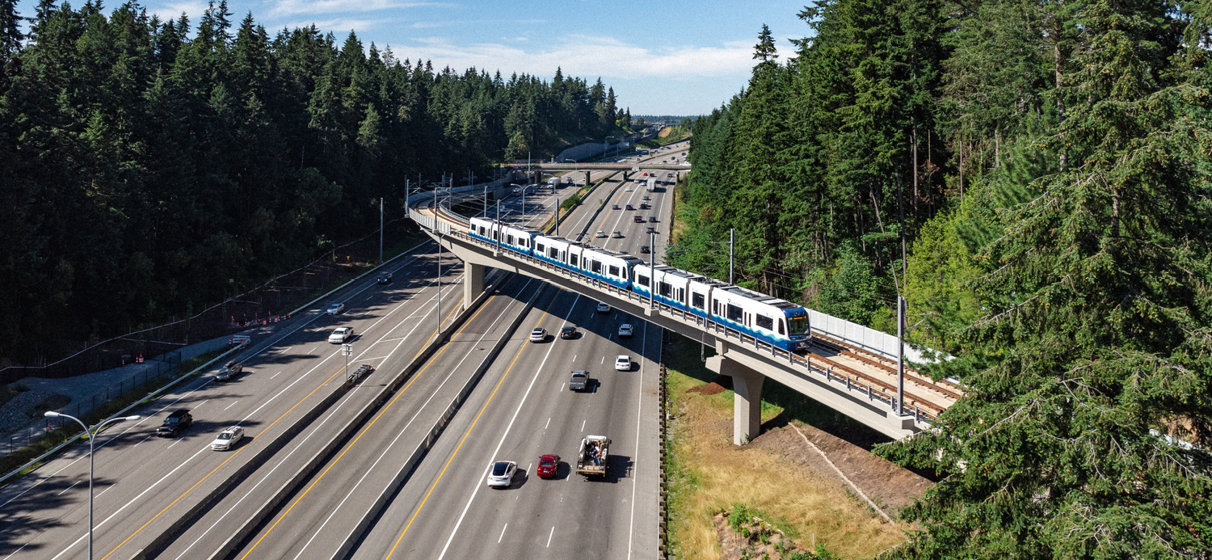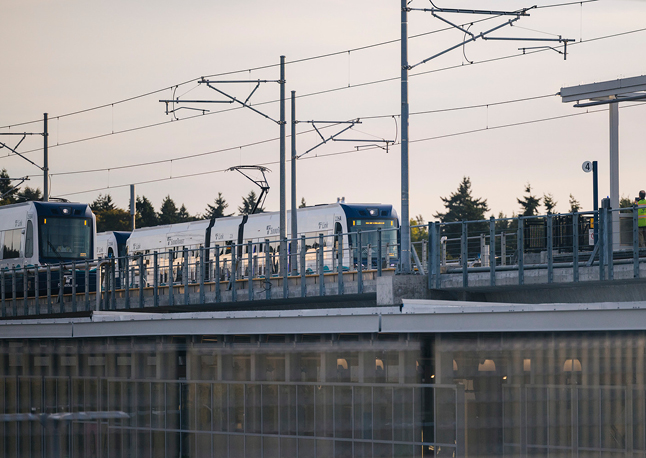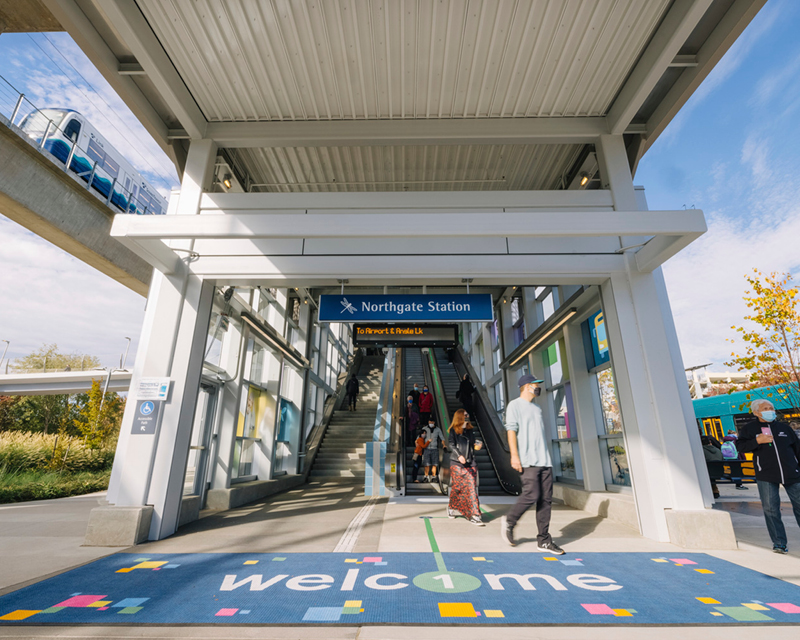As Seattle’s Sound Transit prepares to unveil the transformative East Link Extension, STV’s team, which played a key role in its realization, is celebrating this milestone achievement for the region.
Having partnered with Sound Transit on several of the agency’s expansion projects over the past decade, STV’s most recent contributions have been instrumental in shaping the region’s transportation landscape. The upcoming 2 Line opening, which connects South Bellevue to Redmond, represents a significant achievement in expanding light rail access to Seattle’s Eastside.
In this roundtable discussion, key members of the STV team, including Ja-Mie Luey, P.E., vice president and West Coast rail systems manager; James (Jim) Collier II, senior associate and engineering specialist; James (Jay) Collier III, inspector; and Henry Dadsetan, engineering specialist, reflect on their experiences with the East Link project, discuss challenges, lessons learned, and share their insights on Sound Transit’s larger expansion efforts.
What has been STV’s role in Sound Transit’s East Link Extension?
Ja-Mie Luey: As construction manager in joint venture with Mott MacDonald, our involvement in this project has been multifaceted. We’ve overseen what we call the ‘systems elements’ of a light rail system, which encompasses a range of crucial components such as traction power, signal train control, overhead catenary and communications systems. Our responsibility has been to ensure that these elements function seamlessly to facilitate the safe and efficient operation of the rail system. Our scope of services included monitoring progress, verifying work directives, providing cost estimates and quality assurance, ensuring adherence to project timeline and budget, and implementing necessary adjustments to align with contractual agreements.
Henry Dadsetan: As part of the quality assurance process, we worked with contractors to ensure compliance with installation requirements while maintaining proper documentation for the handover to operations. STV has also been heavily involved in fieldwork and inspections. Our inspectors have played a crucial role in coordinating with contractors on a daily basis, ensuring the safety and integrity of installations while also verifying compliance with design specifications. We’ve been the boots on the ground, fostering a strong collaboration, especially with the mass electric company team to drive the project forward.
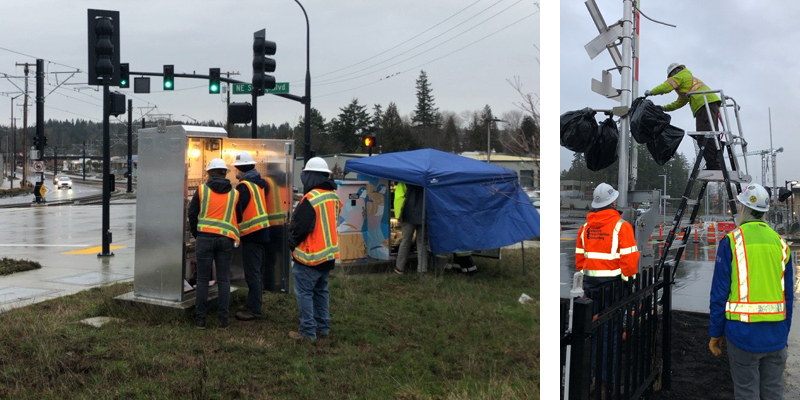
What were some of the significant challenges encountered during this project, and how did STV’s team approach and overcome them?
Jim Collier: As a signal construction engineer for the Northgate Link, East Link and Lynnwood Link extension projects, one of the ongoing challenges has been coordinating between the civil and systems portions. When installing signal train control equipment, it’s common to encounter obstacles due to existing infrastructure, and it’s crucial to coordinate between different disciplines to ensure smooth progress and avoid conflicts in work areas. Additionally, managing simultaneous construction on both the East Link and Lynnwood Link projects posed some real logistical challenges. Our team often found ourselves juggling responsibilities between multiple job sites, navigating through traffic and time constraints between the two projects.
Jay Collier: I’ve been an inspector overseeing subcontractors’ installations and conducting systems and train testing alongside Symetra. With various tasks being carried out by different individuals, staying updated on daily operations and work directives required significant coordination and communication efforts. Our challenge was to build solid relationships with the workers and create a collaborative and productive environment where all were working towards the same goal to ensure project success.
What were some of your key lessons learned?
Henry Dadsetan: When reflecting on the East Link project, one of the key lessons I’ve learned is the importance of effective interpersonal skills in the construction industry. Dealing with diverse personalities requires a positive attitude and a focus on teamwork to overcome challenges and achieve project goals. I’ve also come to embrace the unpredictable nature of construction and realized the significance of adapting to unforeseen circumstances in real-time. Construction projects inevitably run into obstacles, and the ability to problem-solve on the spot is crucial for project success. STV has been excellent in this regard, consistently addressing challenges as they arise during fieldwork.
What was it like collaborating on this project as a father and son team?
Jay Collier: Working alongside my father on such a significant project was a really unique experience. While he held more of an office role, I was out in the field as an inspector, providing firsthand observations to him. Over the course of the project, I learned a great deal from him, and given his established reputation in the signaling field, I really value the knowledge and insights he shared with me. If I could absorb even half of his expertise, I’d consider myself very successful.
Jim Collier: I learned a tremendous amount from Jay. His differing perspectives pushed me to think outside the box, which was a valuable lesson. Working together over the past four years has been a fun journey, and I appreciate the learning experiences we shared.
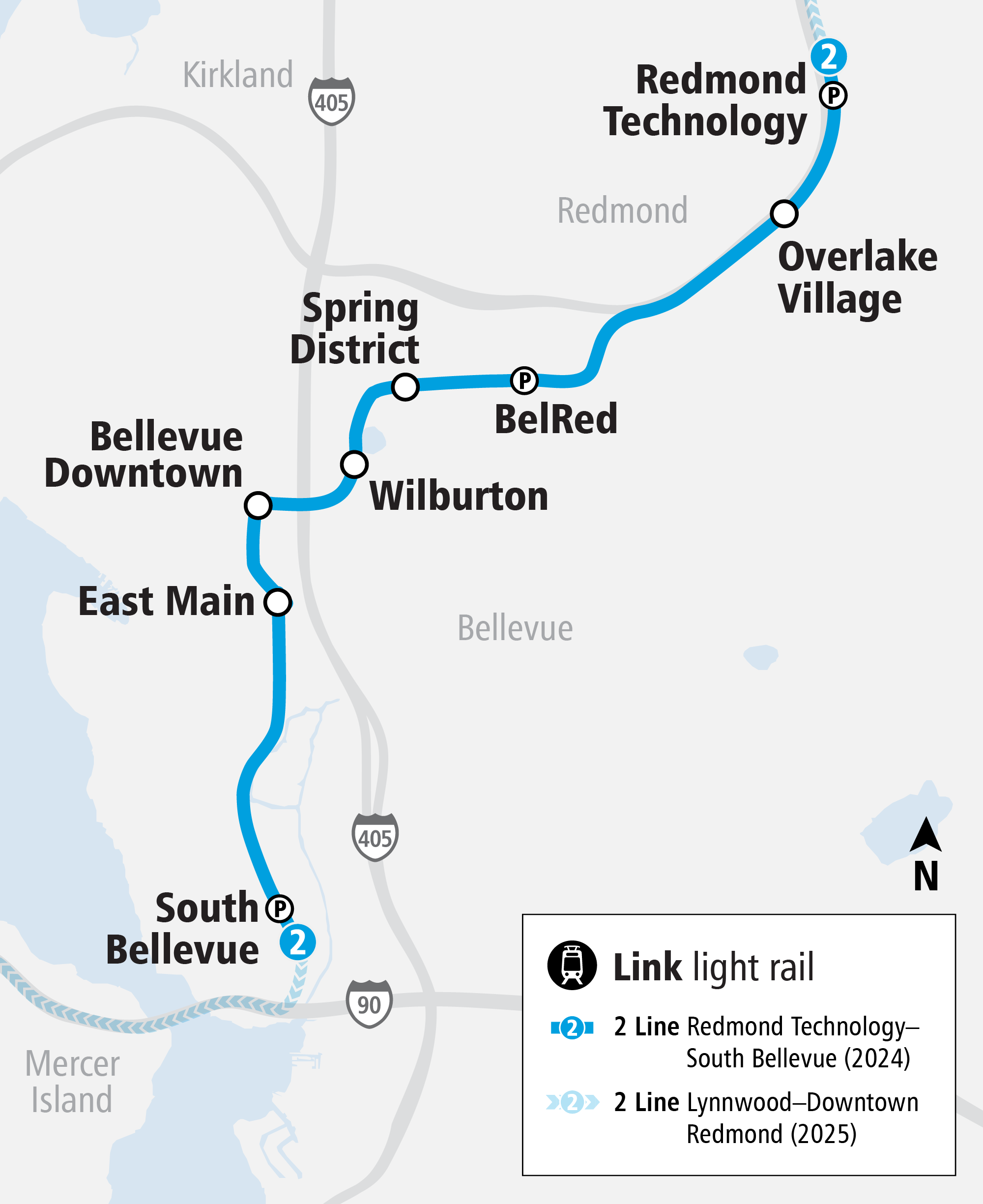
What do you anticipate will be the impact of the East Link on Seattle and the broader region?
Jay Collier: The East Link will have a huge impact on the region, particularly in and around Bellevue. The current traffic on I-5, I-405 and I-90 is untenable, forcing a lot of people to adopt early work hours or work entirely remotely to avoid congestion. By extending light rail from the International District in Downtown Seattle through South Bellevue to Redmond Technology, the East Link will provide faster connectivity to areas bogged down by traffic. The 2 Line Starter Line will especially benefit Microsoft employees in downtown Bellevue and at the Redmond Tech campus, offering quicker access to work. And, it has the potential to reduce greenhouse gas emissions, promoting the use of public transit over driving.
Henry Dadsetan: I think the project will have a positive impact on equitability, access to jobs, and housing affordability. Given the cost of living, having affordable public transportation means individuals aren’t tied to living near their workplace. As Jay pointed out, the East Link also addresses traffic congestion in Seattle. Personally, living 20 miles from STV’s local office, I’ve experienced firsthand the impact of traffic on my daily commutes. With this light rail expansion, I’m excited to see better connectivity across the region, creating more opportunities for everyone.
What are your thoughts on Sound Transit’s broader expansion program and its implications for the region’s development? How can STV contribute?
Jim Collier: I’m really excited about the future of our region. While Sound Transit is initially launching the Starter Line from Redmond Tech to South Bellevue, the plan is to extend it further to Downtown Seattle in the next 18 months. Additionally, the Lynnwood Link extension is set to open later this year, with plans to expand further north to Everett. Other expansions are planned all the way south to Tacoma, and east to Issaquah. Living in Lynnwood myself, I understand the importance of these expansions, and I know a lot of commuters are looking forward to their completion. They will provide quicker access to various areas, easing traffic congestion and improving overall accessibility for commuters. These expansions represent a significant step forward for Sound Transit and the entire region.
Ja-Mie Luey: Having witnessed Sound Transit’s growth over the years, I’m really impressed by the agency’s rapid expansion from its first Central Corridor Starter Line to building the most ambitious transit expansion in the country. STV’s involvement has evolved alongside these developments, and I hope we can play an even larger role in future expansion projects, contributing to their success.
Henry Dadsetan: STV brings invaluable expertise to these projects, being capable in both design and construction management services. Drawing from our extensive experience in both local and national projects, as well as our commitment to making communities better, we’re well-equipped to support upcoming expansion initiatives. Our legacy knowledge from past collaborations with Sound Transit positions us to benefit the region.
Jay Collier: Sound Transit’s ambitious expansion program presents an exciting opportunity for STV to maintain our long-term presence in the Seattle area. As infrastructure is inherently local, being involved in these expansions allows us to contribute to our local communities while also offering growth opportunities for our team members. The potential for future rail projects underscores the importance of local work for our Seattle office and positions STV as a key player in the region’s transportation landscape.
